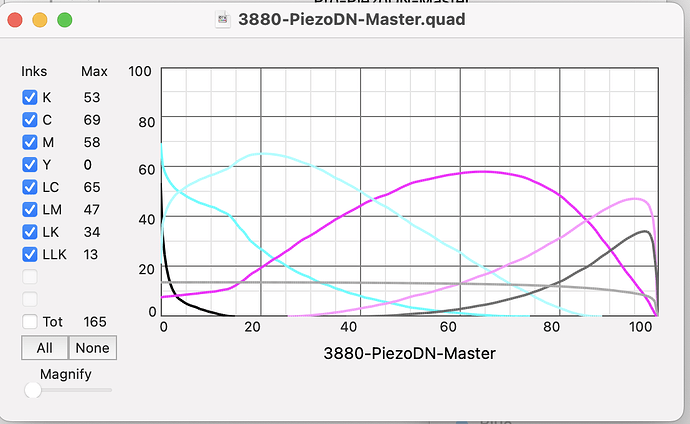This is a printer upgrade question. I’ve been printing digital negatives for contact silver gelatin prints (Ilford Multigrade glossy) using an Epson 3880 (Piezography selenium K6, QTR, Pictorico Ultra OHP, PiezoDN). Is there a newer printer that would provide better resolution/image quality? Did I read that newer printers have smaller droplets- and does this help? Many years ago I used to make 8”x10” contact prints (on Fred Picker’s Brilliant paper)- I’d like to step closer to that image quality. Capture is now a 40MP Sony camera. Thanks.
The problem now is that EPSON has discontinued any new photo quality printers that you can put your choice of inks in. The better solution may be to use the Piezography Pro inks in your 3880 as they are making better negatives. If your printer is getting flaky you could import a new EPSON SureColor P-900 from Europe or the P908 from China/Hong Kong. The USA version P900 can ONLY be used with EPSON carts. The EU and China are designed differently to allow use of a chip resetter. Amazon.DE ships to USA.
best,
Jon
Thank you, Jon. That info is good to know. Fortunately my 3880 is still in good shape. A couple of years back there was a thread that mentioned Pro inks vs Selenium, but in the context of alternative processes (Grainy highlights and FRUSTRATED!). I am interested only in Silver prints (Ilford MG), so the UV blocking isn’t an issue. @ jkschreiber Keith mentioned he was testing Pro vs Selenium inks, and I wondered whether there is a clear winner for silver prints, especially to reduce highlight grain but also resolution/image quality. Every little bit helps!. Thanks
Wayne
Hi Wayne,
When I designed our version of a digital negative system I did so using Ilford Multigrade paper (without filter), but in a darkroom at Dartmouth University which at the time I had a relationship with. This was nearly a decade ago and I just happened to use Selenium inks in an R2880 printer to do so, moreso out of convenience of its size and use of small carts than any other reason. The Selenium inks had no special properties that were more conducive to silver printing than any of the other four K7 ink systems. It just happened to be our most popular K7 ink system at that time. So I grabbed that R2880 and installed it in the darkroom they gave me a key to and all I needed to do was pre-fill a ton of R2880 carts and bring those back and forth for the month or so I had exclusive use of the darkroom. And this is the only reason that selenium inks became the defacto standard. Pro inks had not yet been developed for the new printers as chips were not yet available.
My interest at the time was in silver printing rather than alt-process. Silver printing is too toxic for Cone Editions because we have septic fields and well water. And this dig neg system came into being under those conditions.
Almost immediately I began a collaboration with David Chow in the UK to build a platinum printing negative system for him and I built a non-toxic darkroom at Cone Editions to work with the noble metals. I also lost use of the Dartmouth U darkroom as the University killed their analogue photography program and repurposed that building.
There is now a very limited users base of the 6 and 7 ink position printers due to DOP (death of printers). All new Epson photo printers since the original release of the dig neg system have 8, 9 or 11 ink positions and thus our Pro users base is still growing. The majority of dig neg users are on Pro inks. My own darkroom is on Pro inks. We really have stopped any further development of K7 supported systems other than occasionally formulating ink. And we have no way of testing silver print.
I think that you may find there are silver printers here on the forum that have made the jump, but they will have to comment as to the pros and cons of each.
Here is the base curve we supply for 3880 K7 ink neg system:
This is the base curve we supply for 3880 Pro ink neg system:
in a neg the highlights are produced from the curves of the darker inks to the left of the window representations. It is a different beast with the black ink taking a majority of the heavy lifting but with a more subtle approach to the use of dark density inks. Also there is an additional ink density used in Pro ink negs than with K7 ink negs due to lack of need to use the GO. I have always thought the longer tapering off the K in Pro a more noise free approach. But again not able to see if that holds as well in silver as it does in platinum.
I wish I had more data to share with you. Hopefully someone who has made the switch will come across this thread and let you know their experience. Perhaps you can compare the curves and potentially you have already modified your own K7 setup to reflect that approach in which case - another year maybeeeee two we will continue K7 ink making. That solely depends upon demand.
Best,
Jon

